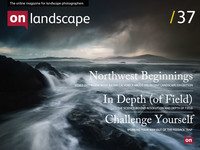More on depth of field

Tim Parkin
Tim Parkin is a British landscape photographer, writer, and editor best known as the co-founder of On Landscape magazine, where he explores the art and practice of photographing the natural world. His work is thoughtful and carefully crafted, often focusing on subtle details and quiet moments in the landscape rather than dramatic vistas. Alongside his photography and writing, he co-founded the Natural Landscape Photography Awards, serves as a judge for other international competitions. Through all these projects, Parkin has become a respected and influential voice in contemporary landscape photography.
Our last article on depth of field took an overview of all of the ‘techniques’. This article is the first one to look into depth of field in depth but don’t worry, we’ll also break out now and again to give you some simple ideas for use in the field.
The first thing to cover is “What is depth of field?”. A lot of people have the assumption that everything in the “depth of field” is sharp and everything outside it is blurry. Nothing could be further from the truth. In reality we only have less blurry and more blurry, only occasionally do we reach truly sharp. Depth of field is all about working out what ‘acceptably blurry’ is.
Circle of Confusion (or 'Amount of Blur')
To understand this we need to take a look at what blur is. If you look at the following diagram, which is based on taking a photograph of a star in the night sky, you can see that light rays converge on a point, either side of that point.

